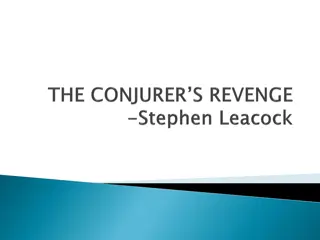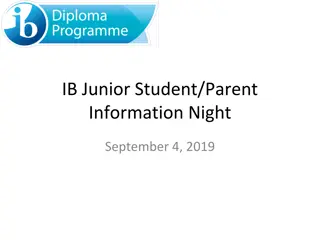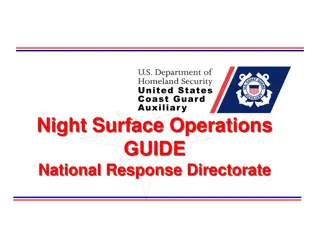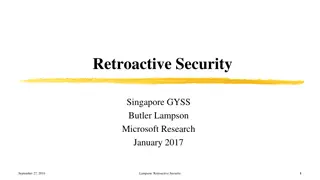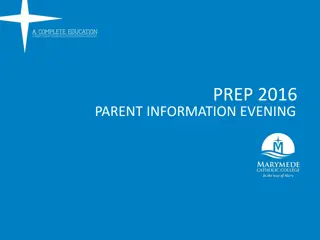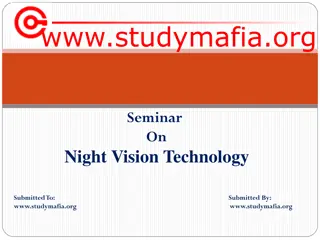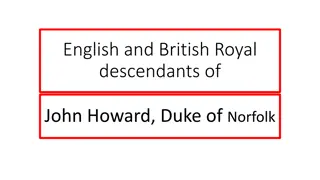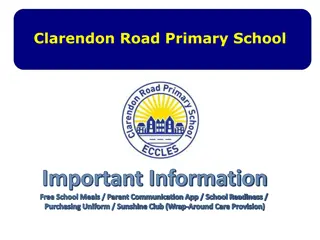
Coherence in Mathematics: Instructional Shifts, Focus, and Rigor
Explore the instructional shifts in mathematics focused on coherence, rigor, and process standards, emphasizing conceptual understanding and fluency in mathematical proficiencies. Delve into topics such as addition, subtraction, and fluency within 1000, linking major topics across grades for a comprehensive mathematical approach.
Download Presentation

Please find below an Image/Link to download the presentation.
The content on the website is provided AS IS for your information and personal use only. It may not be sold, licensed, or shared on other websites without obtaining consent from the author. If you encounter any issues during the download, it is possible that the publisher has removed the file from their server.
You are allowed to download the files provided on this website for personal or commercial use, subject to the condition that they are used lawfully. All files are the property of their respective owners.
The content on the website is provided AS IS for your information and personal use only. It may not be sold, licensed, or shared on other websites without obtaining consent from the author.
E N D
Presentation Transcript
K-2 Coherence in Mathematics 10/26/16
Instructional Shifts MATHEMATICS Focus: Greater focus on fewer topics Coherence: Think across grades, and link to major topics Rigor: In major topics, pursue conceptual understanding, procedural skill and fluency, and application Process Standards for Mathematics: Promote rigor through mathematical proficiencies that foster reasoning and understanding across discipline
Focus 4 2000 2014 2.2.2 Add two whole numbers less than 100 with and without regrouping. 2.CA.4: Add and subtract within 1000, using models or drawings and strategies based on place value, properties of operations, and/or the relationship between addition and subtraction; describe the strategy and explain the reasoning used. Understand that in adding or subtracting three-digit numbers, one adds or subtracts hundreds and hundreds, tens and tens, ones and ones, and that sometimes it is necessary to compose or decompose tens or hundreds. 2.2.3 Subtract two whole numbers less than 100 without regrouping.
Instructional Shifts MATHEMATICS Focus: Greater focus on fewer topics Coherence: Think across grades, and link to major topics Rigor: In major topics, pursue conceptual understanding, procedural skill and fluency, and application Process Standards for Mathematics: Promote rigor through mathematical proficiencies that foster reasoning and understanding across discipline
Coherence 6 K.CA.1: Use objects, drawings, mental images, sounds, etc., to represent addition and subtraction within 10. 1.CA.5: Add within 100, including adding a two-digit number and a one-digit number, and adding a two-digit number and a multiple of 10, using models or drawings and strategies based on place value, properties of operations, and/or the relationship between addition and subtraction; describe the strategy and explain the reasoning used. Understand that in adding two-digit numbers, one adds tens and tens, ones and ones, and that sometimes it is necessary to compose a ten. 2.CA.4: Add and subtract within 1000, using models or drawings and strategies 3.C.1: Add and subtract whole numbers fluently within 1000.
Shifts 7 MATHEMATICS Focus: Greater focus on fewer topics Coherence: Think across grades, and link to major topics Rigor: In major topics, pursue conceptual understanding, procedural skill and fluency, and application Process Standards for Mathematics: Promote rigor through mathematical proficiencies that foster reasoning and understanding across discipline
Process Standards for Mathematics 1. Make sense of problems and persevere in solving them. 2. Reason abstractly and quantitatively. 3. Construct viable arguments and critique the reasoning of others. 4. Model with mathematics. 5. Use appropriate tools strategically. 6. Attend to precision. 7. Look for and make use of structure. 8. Look for and express regularity in repeated reasoning.
Instructional and Assessment Guidance
Making a Ten 11 8 + 5 2 3
Making a Ten 12 58 + 5 2 3 60 + 3
Place Value 14 Use the base ten blocks to show the number 23. Can you show 23 in a different way? 1.NS.6: Show equivalent forms of whole numbers as groups of tens and ones, and understand that the individual digits of a two - digit number represent amounts of tens and ones.
Subtraction 15 1 13 23 15
Multi-digit Multiplication 16 Use your base ten blocks to show 1 x 14. then 2 x 14 then 9 x 14 Use your base ten blocks to show 23 x 14.
23 x 14 17 20 + 3 10 x 3 = 30 10 x 20 = 200 10 + 4 x 3 = 12 4 4 x 20 = 80
Area Model revisited Multiply (2x + 3) (x + 4)
Multiply (2x + 3) (x + 4) 19 2x + 3 x x x2 3x 12 x2 x x + 8x 4
Questions? 20 Nick Meyer meyern@myips.org Kathy Jones jonesk@myips.org









